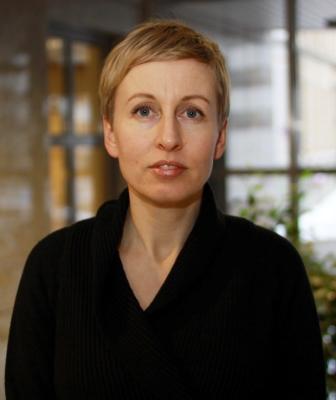
The percentage of women in academic positions has increased, and the majority of students in the humanities are women. However, the field of history stubbornly remains one of the faculty’s last male bastions. Now the Department of Archaeology, Conservation and History has taken the initiative to document the gender imbalance by commissioning an external study from the Work Research Institute, which has produced the report titled Historie – et guttefag? (“History – a man’s field?”). The report looks primarily at the academic culture and environment to find reasons for the imbalance.
The field’s emphasis on empiricism and associations to wars, dates and royal lineages are among the factors highlighted in the report as reasons history can be perceived as “harder” than the other humanities – thus making it a “male” field.
“Many people bristle when they hear an expression like that and get concerned that it means women don’t ‘really’ belong in that field. But it has to do with perceptions about a field. The report doesn’t take a position as to whether or not history is a male field of study. We chose to let this expression serve as a kind of recurrent theme, mainly because we have investigated whether there is something about the academic culture that attracts more men than women,” says Cathrine Egeland, a researcher at the Work Research Institute and the project manager for the report.
Unimportant problem
Only one-fifth of the professors in the Section for History are women. But more striking is that the percentage of women associate professors is also extremely low, which is an even stronger indication that for some reason history is still male dominated. Other humanities fields have a higher percentage of women associate professors, and the report notes that the recruitment base for increasing the percentage of women appears to be narrower in history than in other fields.
“But history is not alone in having a gender imbalance at the top of the academic position hierarchy; the same is true for political science and philosophy,” Egeland emphasises.
“I think that some of the problem with these fields is that the lack of gender equality and male dominance are not really viewed as a problem. The gender imbalance is not perceived or discussed as a genuine problem for these fields as such, but more as an unimportant, partly bureaucratic problem pushed onto them from the outside. When something isn’t actually regarded as a problem, then it’s not so important to solve it either,” says Egeland.
Not open to new impulses
One of the most noticeable findings in the report is that the academic environment and section are characterised by conservatism at several levels. This is based on several different findings – for example, that the field is described as extremely empirically oriented and that the environment is consensus oriented and not particularly open to new impulses.
The report also shows that the research fellows in the section feel a lack of recognition and professional interest on the part of the senior staff. The academic culture is described as a typical consensual culture – meaning that the environment is characterised by a belief in unambiguous quality standards and scepticism toward interdisciplinarity, and is less open to allowing competing paradigms and areas of interest to exist alongside each other. Several of the report’s informants point out that this can make the environment less interesting to women historians, who are more often interested in theory and are more likely to gain inspiration from theoretical directions from related fields.
The report mentions that previous research has shown that women often encounter problems in consensual academic cultures as compared with environments with intersecting areas of interest and greater receptivity towards conflict and pragmatism.
Listen to our podcast: Can good leadership solve academia's gender and diversity problems?
Internal recruitment
The consensus-oriented environment has often resulted in more internal recruitment, which has not been advantageous for women researchers either. Egeland believes, though, that in practice this does not involve quotas for men.
“This must be understood in light of the fact that history in Norway has been a nation-building field with long-standing academic ideals and practices and prominent leaders. We see that this has created a foundation for a consensual academic culture and a high degree of internal recruitment. It’s also true that this has been disadvantageous for women, who have often been interested in topics that lay at the periphery of history as a field of study – at least based on how the field has developed at Norwegian universities,” says Egeland.
In 2007, the Research Council of Norway concluded that the Department of Archaeology, Conservation and History lacked internationalisation and showed little curiosity about new directions and theories – which had led the department to make internationalisation a priority focus area in recent years. However, several of the report’s informants say that the history environment at the University of Oslo is still perceived as a “backwater” which is dominated by “heavy empiricism” and which holds up the document-focused empiricist as the ideal. As a consequence, historians who are interested in the development of methodology and more theory-driven topics risk falling outside of the prevailing academic focus.
“But I wouldn’t say that the internal recruitment involves male gender quotas because we aren’t talking about conscious discrimination. Quite simply, internal recruitment is the logical consequence of a desire to maintain an academic culture and the academic ideals and priorities that exist,” explains Egeland.
Willingness to change
The report’s conclusions about academic self-satisfaction, little interest for other research fields and a closed academic culture point to the need for change in the academic environment. In its conclusion the report recommends that the leadership create a framework for greater academic openness and curiosity through clear initiatives and a systematic effort to reflect on gender balance in the context of the academic culture and working environment.
Tor Egil Førland, a professor in the Section for History and chair of the Department of Archaeology, Conservation and History, explains that the department has begun an internal evaluation of the report, but he does not want to comment in detail until the process is completed.
“But we regard the gender imbalance as unfortunate,” emphasises Førland.

“The report shows that male dominance of the history field is actually less in our department in than in other history environments in Norway, but we still want to reduce the inequality. This is why we commissioned the report from the Work Research Institute in the first place.”
Førland also says that the process currently underway will result in a plan for measures that will be presented at the departmental conference in the autumn and that the report will be used internally within the academic environment in the future, even after the first evaluation.
“We’ll continue to use the report to work on the working environment here in the history department,” says Førland.
“The environment has improved in recent years, but we can continue to get better at giving each other positive attention.”
Cathrine Egeland also thinks it is important to note that the academic environment itself has commissioned the study, which indicates a willingness to change and to take the problem seriously.
“They should get credit for their willingness to problematise the lack of gender equality, especially since fields such as history, political science and philosophy have traditionally been unwilling to view gender imbalance as a genuine problem. It’s interesting that a country like Norway, which is known for its gender equality, has allowed these fields to become male dominated without drawing attention to the problem to the same degree as the absence of women from mathematics, natural science and technology,” she says.
“This is why the initiative from the Section for History at the Department of Archaeology, Conservation and History at the University of Oslo is important. It shows that they don’t regard gender balance as a requirement pushed on them by a university leadership that fears the field will appear to be an old-fashioned male bastion, but that they actually take the problem seriously,” concludes Egeland.
Translated by Connie Stultz.
This article is also published at Gender Balance in Research
The Work Research Institute, in cooperation with the Nordic Institute for Studies in Innovation, Research and Education (NIFU), has conducted a study of the gender imbalance in the Section for History under the Department of Archaeology, Conservation and History at the University of Oslo to find the reasons for this.
The study is based on focus group interviews and individual in-depth interviews, as well as on numbers-based analyses of the gender composition of the history field. The report Historie – et guttefag? (“History – a man’s field?”) may be downloaded at the link below (in Norwegian only).



